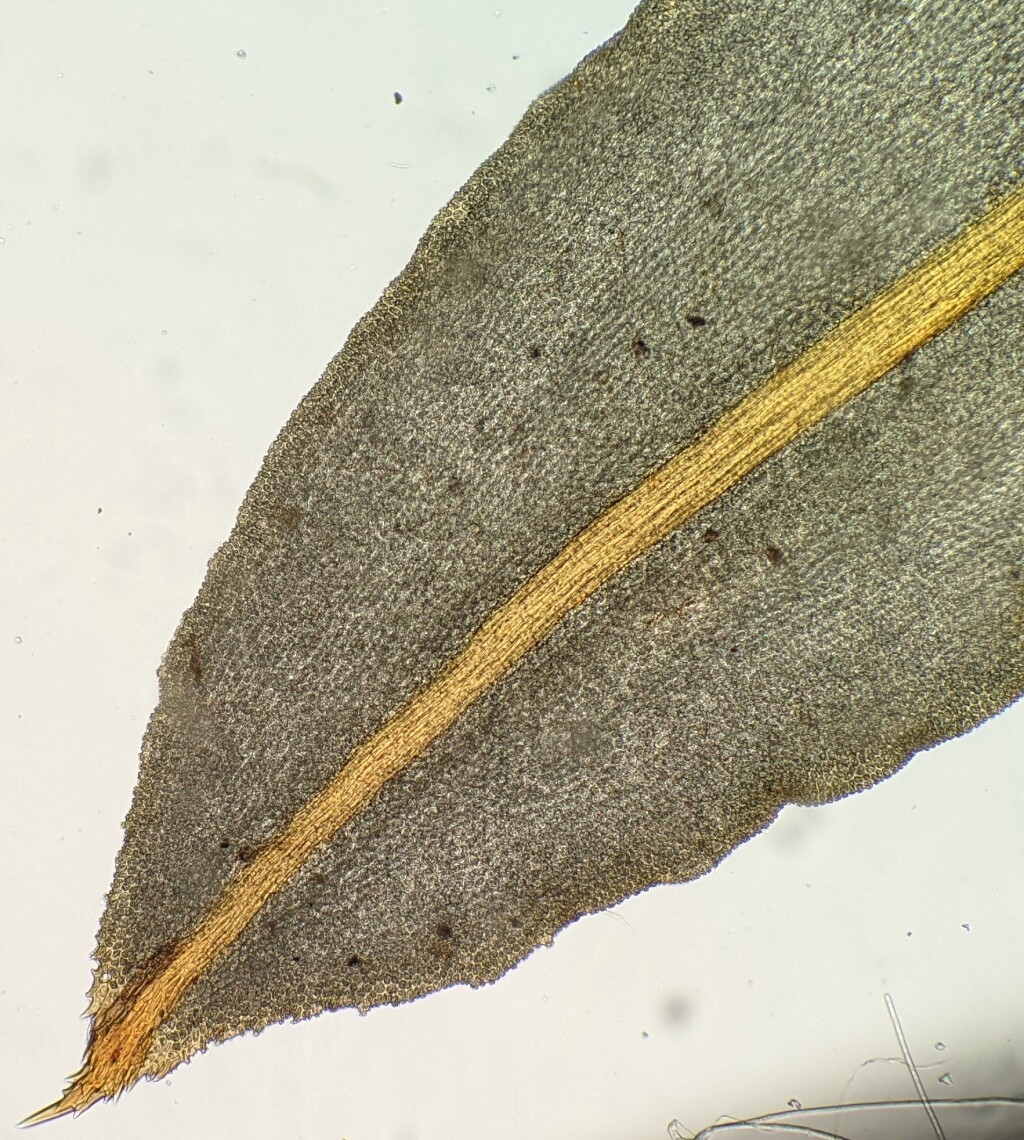Syntrichia
Dioicous, autoicous or synoicous. Asexual reproduction by caducous leaf apices, gemmae borne on leaf laminae (not in Victoria), adaxial costae, stem apices or leaf axils or by rhizoidal tubers (not in Victoria). Cushions, tufts or turves on soil, rocks or trees. Stems simple or forked, covered in rhizoids, sometimes tomentose at base; central strand present or absent; hyalodermis present or absent; sclerodermis absent. Leaves oblong-lanceolate, lingulate, obovate or spathulate, erect-spreading to squarrose when moist, appressed and twisted around stem when dry; apex emarginate, truncate, rounded, obtuse, apiculate or acute, often with a hairpoint; hairpoint hyaline or coloured, smooth or denticulate; costa subpercurrent (not in Victoria), percurrent (not in Victoria) or excurrent, with quadrate to elongate adaxial superficial cells, with a differentiated adaxial epidermis, with or without an adaxial stereid band, with or without hydroid strands, with an abaxial stereid band, without a differentiated abaxial epidermis, with elongate abaxial superficial cells; margin entire or denticulate near apex, plane or revolute, rarely involute toward apex, without a distinct border, but sometimes with thicker-walled and less papillose cells; laminal cells in apical half quadrate, hexagonal, rhomboid or ovate, pluripapillose or rarely abaxially unipapillose (not in Victoria), with bifid or simple papillae, unistratose or occasionally bistratose (not in Victoria) entirely or in patches, with a red KOH reaction; basal laminal cells extending furthest midway between costa and margin or near costa, rectangular, smooth. Acrocarpous. Capsules erect, straight or slightly curved, cylindric, exserted, operculate, with an annulus. Calyptra cucullate, smooth. Operculum conic. Peristome of 32 twisted filaments.
Cosmopolitan, with around 90 species; nine species in Victoria.
Syntrichia was segregated from Tortula based on a combination of the red KOH reaction of the lamina cell walls, the crescent-shaped section of the stereid band and the absence of a differentiated abaxial costa epidermis (Zander 1989, 1993). This segregation is supported by phylogenetic analyses of chloroplast DNA sequences (Werner et al. 2002).
 Spinning
SpinningWerner, O.; Ros, R.M.; Cano, M.J.; Guerra, J. (2002). Tortula and some related genera (Pottiaceae, Musci): phylogenetic relationships based on chloroplast rps4 sequences. *Plant Systematics and Evolution * 235: 197–207.
Zander, R.H. (1989). Seven new genera in Pottiaceae (Musci) and a lectotype for Syntrichia. Phytologia 65: 424–436.
Zander, R.H. (1993). Genera of the Pottiaceae: Mosses of harsh environments. Bulletin of the Buffalo Society of Natural Sciences 32: 1–378.

